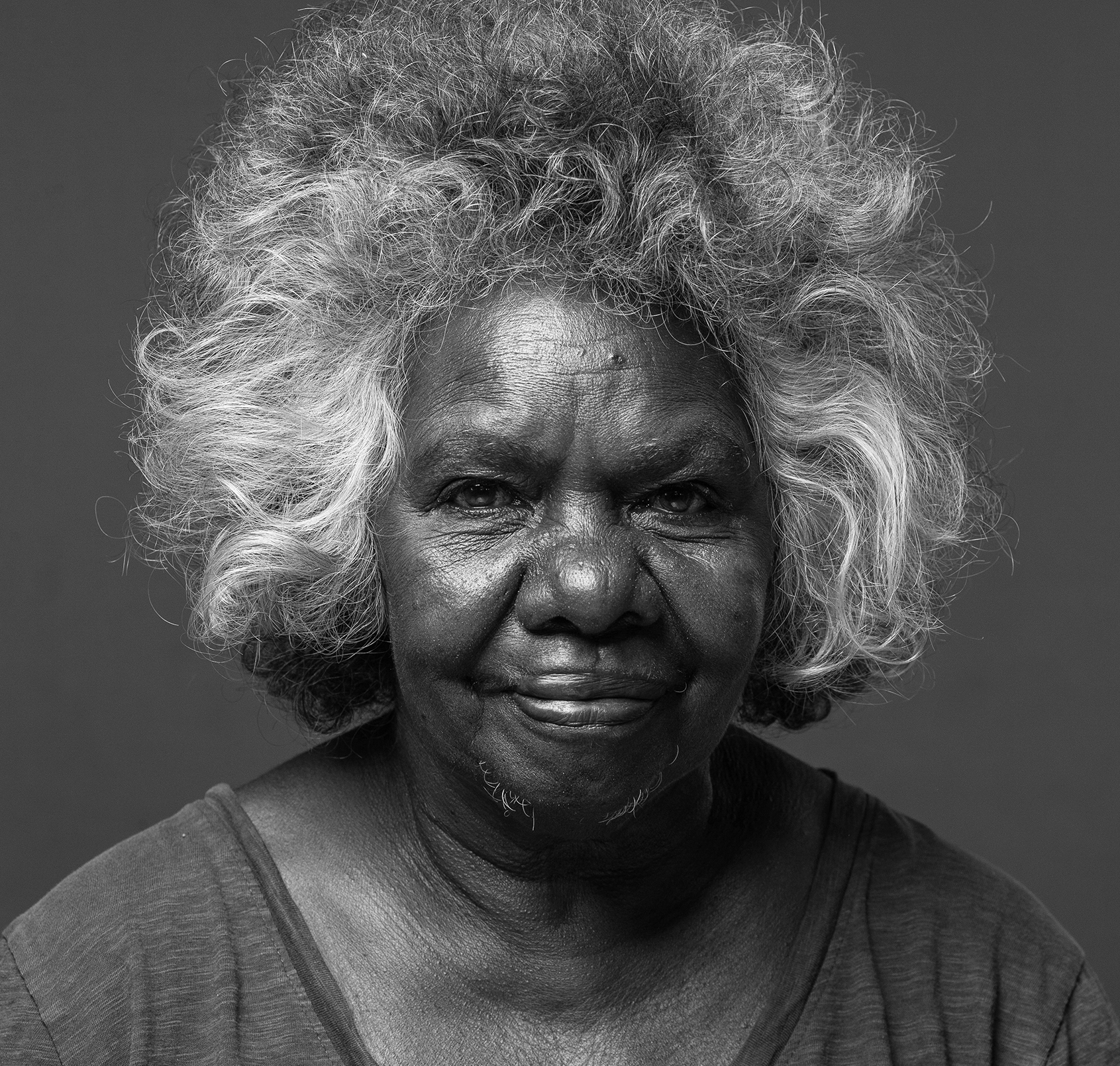Susan Balbunga
Yurrwi/Milingimbi
2023
Displayed 2023 at Carriageworks

Susan Balbunga
Warrawarra.
Born 1953
Lives and works Yurrwi/Milingimbi, Northern Territory
Susan Balbunga is a senior Warrawarra artist working at Milingimbi Art and Culture. She is a respected cultural leader and educator known for her extensive knowledge of Country, plant names and uses, Yirritja and Dhuwa ceremony and history. Balbunga’s art practice is informed by her lived experiences growing up in the bush and the knowledge and skills she acquired from her Elders. She continues to make traditional fibre objects, including the revered bamugora (conical mat), an-gujechiya (fish trap) and ceremonial body adornments. She also experiments with combining different traditional weaving techniques to create playful sculptural works.
Photograph: Rhett Hammerton
Artist text
by Susan Balbunga, translated by Salome Harris
As I make the bamugora, I talk to it. I say to it, ‘Yindithi’ – ‘Grow big.’
My grandfather and grandmother told stories, and I recorded them in my mind. I saw my grandmother sitting with bamugora like the women in the photo. (1) When I was five years old, I crawled inside. I said, ‘Ya balanya ŋunhi’ – ‘Oh yeah.’ When I got older, I saw a bamugora, and I thought, ‘I’ll try.'
Bamugora is protection. It shields us from the sun and wind. It keeps away scorpions, mosquitos, sandflies, and mokuy (spirits). They don’t want to go near it.
Sometimes, if you are walking at night, and you feel something, like there is a mokuy walking behind you, you can get some pandanus leaves [the bundled core of new leaves] and swing it around to keep them away. You swing it around your head and you say: ‘Nyo:::::’. It’s the sound a wuŋgan makes when it howls. Then you can lay it across the path – ŋayi dhu gulmaram ŋanya – it stops them. Bamugora is made of pandanus and works the same way. It protects us.
We use it as ground cover and a shelter for a mother and her newborn, as a tool for girls’ and boys’ initiation, or as protection for a sick or dying person – to cover them. We prepare food on it.
Now we have skirts, shirts, and blankets – we have many things. Before, we just had this, but we used it for everything.
We use it for grinding wäkwak (lily seeds) on, and then we cook [the dough] on mapuḏumun leaves (billygoat plum) – one on top, one underneath, on top of the coals. Raŋan (paperbark) is also used. Sometimes we heat up gundirr (pieces of termite mound) and put these on top to roast it.
This type of long woven starting point on a mat or bamugora is called jin-guga (centipede), named after the shape of the point. When the bamugora is laid flat, it forms a semicircle. When it is folded again, it has a point.
In the old photos you see bamugora without ḏawurr (loose strands). That’s because after a while, the ḏawurr breaks off.
Early in the morning, when you wake up, and at night – nhe dhu dhurthurryunmirr – you cover yourself. When it’s cold you can top it up with raŋan.
Nhakun ŋayi date-mirr, nhakun ŋalindiy, bärra’mirr, rarranhdharr ŋayi li ŋatha borum, ga ŋayi wata roŋiyirr.
Like, it’s seasonal [when we use it], as in monthly, or when the west wind blows – bärra’mirr (wet season) – or during rarranhdharr when food ripens and the wind returns.
As told to Salome Harris, October 2022 at Milingimbi Art and Culture, Northern Territory.
(1) Donald Thompson Collection photo 1719: Skirts (Ngänmärra), Milingimbi Group, N.E. Arnhem Land, September 1935. Two women and a child sitting on a beach with single-fold bamugora shielding them from the wind, or from the gaze of the camera.
Artist's acknowledgments
The artist thanks: ‘My grandmother, she's teaching me the story of bamugora when I was 5 years old. She teach me and I saw her use it when she was old woman ready to pass away. Not only my grandmother, too many old people from other tribes, other people they use it because they've got no blanket or sheet. I want to thank Lily (Pascoe), she help me a little while, and my daughters Valda Malara and Roselyn Bayambula and my grandson Philip Guyabaka. I'm happy.’
Susan Balbunga works with Milingimbi Art and Culture, Yurrwi/Milingimbi, Northern Territory.
